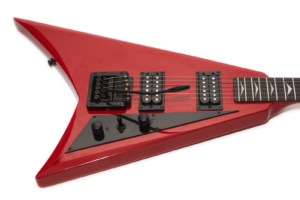
While not strictly speaking a Guild, Burnside was a company that operated under the Guild umbrella so that Guild could sell less expensive import guitars along with their US-made brethren. Some companies (Jackson comes to mind) managed to produce some stellar import guitars, so let’s see if this Burnside Lance can compare with the US-made Guilds from the 1980s.
Introduction
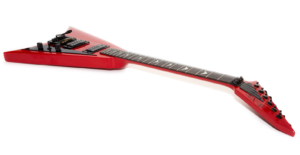
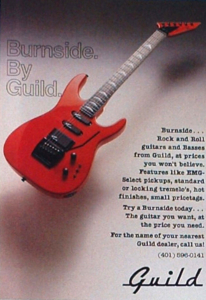
In the middle of those two time frames sits the late 1980s when the import electric guitars from Guild sported the brand name Burnside. These guitars were clearly chasing the ’80s shredder market because most of them had floating tremolo systems with locking nuts and wacky designs including truly awful pointed headstocks. Well, almost all of them had awful pointed headstocks. I should note that my level of intensity relating to the Burnside brand does not coincide with the difference in quality when compared to Guild, probably because I actually have a Burnside in-hand and somehow feel like I owe it to my readers to do some actual work on their behalf given that I’m reviewing it. You’re welcome.
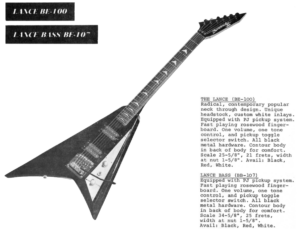
cheap inexpensive import guitar from the ’80s can compare with a name-brand instrument from the same era that often sells for multiple thousands of dollars on the used market?
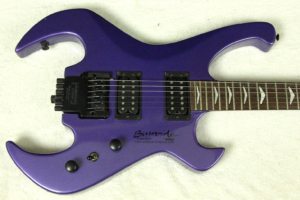
There were various other Burnside models including one that looked like a Telecaster (the Burnside Wizard), the Burnside Famous (a different Tele), the Burnside Warrior which was similar (though less aggressive) in design to the Crossbow but with a normal pointy headstock, and even a Burnside Semihollow which is the only model I’m aware of that has a normal headstock. That semihollow was called the Mini Starfire because… well I’m not entirely sure why. Maybe it was a smaller than a Starfire. Sorry, I used up all my research motivation on the names of all the Burnside models which took a surprising amount of time and effort to accomplish. You’re welcome again.
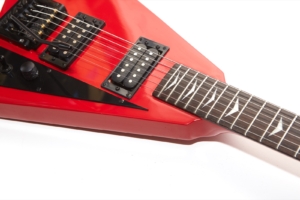
Though not in my normal realm of guitar hunting, the Burnside Lance that is the subject of this review came to me because I got it new in-box for a ridiculous price, which is really the main selling point of these guitars – the price. They were and continue to be cheap have quite low prices though I could similarly argue that they’ve held their value quite well. I believe that kind of logic is commonly called marketing.
The case
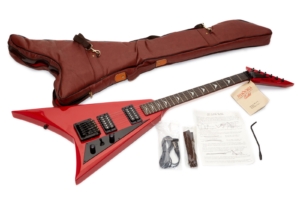
a cheap an imitation leather bag that is clearly designed for the guitar. It came in a typically weak import cardboard (cheap) box that was of the typical trapezoidal shape that inexpensive (cheap) import guitars often ship in. How it remained untouched for 30 years is a bit of a mystery though this thread from the Let’s Talk Guild forum may shed some light on said mystery while likely explaining any other new-in-box Burnsides you may encounter these days. I have a feeling that this guitar may have been one of the ones mentioned in that thread.
Finish
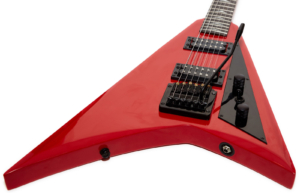
Though an inexpensive import guitar, there’s no doubt that it’s an attention-getter because it’s about as red as it could be without being on fire. The red contrasts very nicely with the black accents which generally make the guitar look pretty damn good even to this gear snob. Though my teenage daughter has commented that this may be the ugliest guitar thing she’s ever seen, my ’80s sensibilities kind of like it. You know, a little. Except for the headstock.
Fretboard and Neck
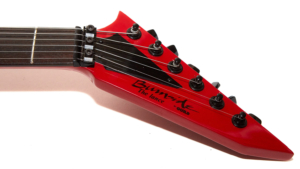
The frets are .025″ high and .09″ wide making them typical of vintage Guilds and not what I’d expect on a guitar aimed directly at the ’80s shredder market in which guitars are usually outfitted with jumbo frets. I imagine that jumbo frets would have cost more, though, and again that’s not how low prices are achieved. The fretwork is not bad given the guitar’s price point. The headstock has a pretty severe angle to it which when coupled with its extreme pointiness and general ugliness make it very easy to smack it into damn near everything around you when playing it.
Another thing that surprised me about this guitar is the fact that the fretboard radius is 9.5″ which is a more Strat-like curved board than the flatter boards I see on most Super-Strats, though to be fair many Super Strats started as Strats with 9.5″ boards so it’s not completely unusual. The neck is just a bit wider than 1 5/8″ at the nut which is typical for this time frame.
The neck is surprisingly chunky and it’s the first thing I noticed when I picked up the guitar, my measurements putting it in the same realm as my 2002 Bluesbird (yes – it’s that fat.) While I love chunky necks, this is also a bit of a departure from the typical shredder guitar which favors flat boards and thin necks with jumbo frets. Sadly I don’t think this guitar was aimed at players, but rather at young people in the late ’80s who saw red pointy guitars and yelled I WANT THAT!
I shouldn’t make fun because that’s pretty much what I did when I bought it, though I’m a 50 year old guy who pointed at my computer screen while doing so. Yeah, I know you’re picturing that right now.
Build Quality
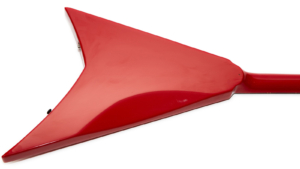
At 6 lbs 7 oz (2.92 kg) this is an extremely lightweight guitar which is no surprise given the body shape. Reports online indicate that the wood is pretty soft and that they often had dented finishes from the factory. I don’t see any sings of that on this guitar, but it seems to have sat somewhere quietly for decades. I’m not sure what the wood is but my guess would be something inexpensive like poplar. Some people say they’re mahogany which I doubt since the weight of the thing suggests something more like balsa. I really don’t think it’s balsa. Seriously. Don’t repeat that.
Pickups
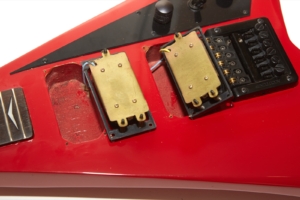
Sadly, I didn’t think that there was a lot to report about these pickups aside from the fact that they were clearly made for Guild since they have the double adjustment points on one side which not many other companies used. The pickups were a complete mystery until I went to attach the strap peg.
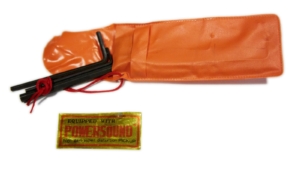
The descriptions on that Seymour Duncan page mirror what I hear which I will cover more in the Sound section, but to my ears they do seem to have ceramic magnets. Proud that I had unearthed details about these unmarked pickups, I then realized that I had essentially proved that they were basically no-name import pickups.
Electronics
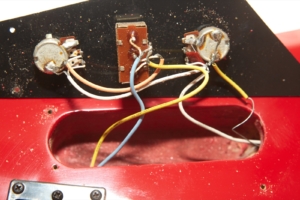
I do like the fact that the wires are color coded, but if I were to gig at all regularly with this guitar it would all be gutted and replaced with industry standard parts like Switchcraft and CTS or Alpha not to mention some nice pickups and nicer wiring.
I decided not to draw up a schematic for this guitar because that takes a lot of time and frankly I just didn’t feel like it. Besides, you can pretty much see the wiring clear as day in that picture except for the capacitor which, believe it or not, is a .033μF cap (labeled 2A333). Also, I find it hard to believe that anyone out there is looking for the wiring diagram for a Burnside Lance so that they can restore it to its original glory.
This guitar, for all its good points, has two main weaknesses. One is the electronics (including the pickups), and the other is the hardware. Hmm, there’s not much left when you remove all of those things, is there…
Hardware
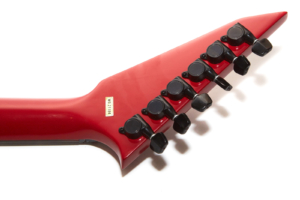
crap, er, tuning machines, but they hold tune well enough and have a nice feel similar to Grovers. In all fairness, though, they’re essentially new so they don’t have 30 years of wear on them. After 30 years of use the Grovers on my US-made Guilds still feel great. I have my doubts that these would age as gracefully but I suppose that’s just me being judgmental.
The pick guard is solid but the design bugs me when playing because the pickup-side edge is exactly where I rest my fingers while I’m picking. Yeah, that’s a “me problem”, but I think they went for looks over function on the design.
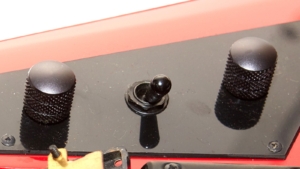
The strap pegs are standard fare though I should point out that the neck strap peg was not installed from the factory. The hole was drilled, though, which probably means it was a way of keeping the guitar from being damaged in transit since the neck stud is a major fulcrum point when installed and would have certainly poked through the flimsy box at the first opportunity. This is probably not a concern unless you manage to find a new-in-box example yourself at which point you’ll likely slide everything out of the box and have the neck strap peg fall on the floor and roll under the heater like I did.
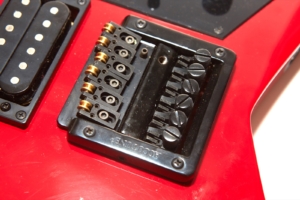
The output jack was completely loose when I got it, but who knows if it came that way from the factory and had been sitting in the box like that for 30 years. My guess is that it was based on my other observations with the hardware.
Sound
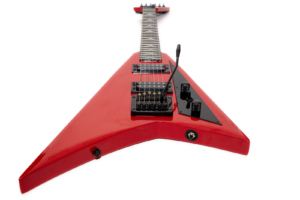
cheap inexpensive import crap switch that was the culprit.
ODS100 Clean
Open Chords
D-Shape
7th Chords
JCM-800
A Barre Chords
D-Shape
Riff
Citrus
D-Shape
So Many Roads
This guitar has a very dark sound and the neck pickup especially turns to mud very easily if you just look at the tone knob. You’re just not going to get articulate wide-range response from cheap ceramic magnet import pickups because as stated earlier, the universe has rules about those kinds of things.
I found the bridge pickup to be OK, though still dark, and the neck pickup could deliver some nice tones when played in the guitar’s upper registers, but I was never really blown away by any of the tones that the guitar produced. Middle string double stops or even an open A chord with high gain on the bridge pickup was reasonably snarly and even almost articulate but the overall dark nature of the tone just made it all kind of uninspiring.
With some new electronics and some nice pickups this guitar would likely produce some nice sounds but I’m not sure I’d spend the money on it. If I already had the parts laying around then I might because the electronics are a serious weak point on this guitar, though even then I’d probably want to swap out the bridge with a Kahler but to be honest I have no idea if the holes would line up. So far as I can tell there is no way to replace the headstock.
Playability
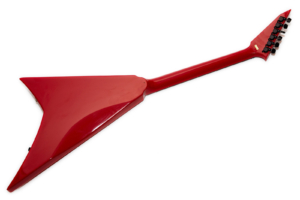
The guitar is very light so its not tiring to play, though the fact that it’s a cheap low priced guitar is pretty obvious in the feel of the frets, fretboard, and bridge. Some flying-V type guitars can be neck heavy but that’s not the case at all with this one so it’s reasonably nice to play while standing though I’m not a fan of the rear strap peg being above the center line of the guitar. I think it’s a bit of a requirement on this one, though, as the weight distribution is not even down the centerline so having the strap sit a bit higher is probably a necessity given the design. Also, Jackson does it this way and this is pretty much a straight-up copy except for the headstock.
Conclusion
The Burnside Lance is a fairly solid guitar given the price point, though I would not recommend it as a first guitar, nor would I recommend it as a gigging guitar. Hell, I’m not sure I’d recommend it for anything, honestly, but it is fun to play with, so I guess I’d recommend it as what it is to me: a curiosity.
If you really want a Jackson RR1 Randy Rhodes model or something that looks like it but can’t afford one I’m still not sure I’d recommend this. I’d probably have you check out a Jackson JS32 Rhoads import model (or a JS 1X if you can’t afford that) or even a Dean or an Epiphone flying V or honestly any other guitar made in the past 10 years or so since they’ve managed to perfect CNC guitar building. Import guitars today are often worlds beyond what was available in the ’80s and you can get a lot of guitar for your money with modern imports. Also the headstock on a modern import will almost certainly look better than the one on the Lance which is, well damn – just look at it. Ew.
Where this guitar shines is the price. If you’ve got a spare $200 to blow on a guitar the Burnside Lance will get you there. Just don’t expect it to have great hardware, pickups, or electronics. Now, if you were to gut the electronics and put in some nice pickups you might get somewhere, but then you’ve probably spent enough money to have just bought a better guitar with a nicer headstock in the first place.
Yeah, I’m a guitar snob, but what you may not know about me is that one of my all time favorite guitars is an Import Jackson. I have nothing against import guitars but I am biased towards quality regardless of origin and as a result I just can’t recommend a Burnside Lance based on that criteria. Fun toy? You bet. Serious long-lasting instrument? No.
Donate: PayPal Crypto:
ETH: 0x0AC57f8e0A49dc06Ed4f7926d169342ec4FCd461
Doge: DFWpLqMr6QF67t4wRzvTtNd8UDwjGTQBGs


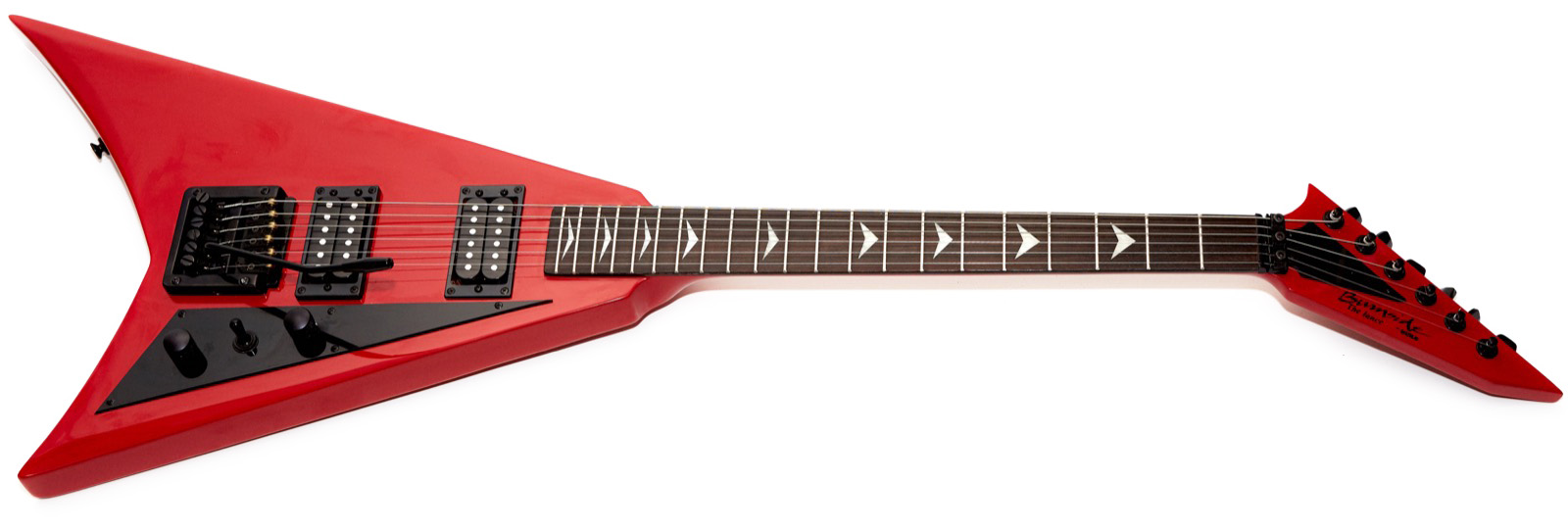

I had one bought it in 1984. No mater what you think of the pickups I’ve been trying for years to recreate the sound of that guitar. If I could get my hands on one today I would be like a kid in a candy store. Just because something has a name brand and cost thousands and tens of thousands of dollars doesn’t make it better. Is it a off brand you bet it is, is it a piece of junk not by a long shot. Mine was as pictured above and to me it ones one of the best things I ever played. I giged with it for years hooked to a Fender Prinston Chorus and BOSS Flanger and a American Metal foot pedals. Yes today at 52 I’m more sophisticated and wealthy and my guitar collection reflex that with a 65′ Strat, 59′ Les Paul among others nothing and I mean nothing can repeat the sound of it at all. It played like lightning and had the power to straighten your hair. Mine was damaged while being shipped to me in Florida when I went into the military and UPS insurance took it and paid me to replace it.
I had a commander who played with Roy Orbison, he choice the military and Roy went on to do what he did, he set up my new Gibson but it still never held a candle to the Burnside. I even took the Brunside to a recording studio which was owned by one of the guys that set up guitars for Black Sabbath and then for Iron Maiden I played it he played it and said the damage caused by UPS was nothing more than “road use”. He said he has seen munch much worse. I should of kept it, it just has the top tip of the V broke off. Oh yes the head of the Burnside was something of the era of heavy metal and Hairbands of the 80’s I never knocked anything over with it and got a lot of compliments on my candy apple red Burnside Lance by Guild.
I bought my Guild Burnside The Lance used for $75 in 1996 or so. It was beat but I took it apart, resoldered the bridge pickup, disconnected the neck pickup, took apart the broken Accutune bridge and made it a fixed bridge. The point is it plays awesome, I still own it. Can’t sell it even if I wanted to. Like I said it’s beat, but boy it still shreds.
I bought a white Burnside Strat several years back on EBAY for $100.00 w/free shipping. It came with the padded case and all hardware in bags. I bought a Kahler 2300 tremolo to replace the cheap copy. I have all new POTS, caps, switch and wiring. Will be installing an SD Invader for bridge and Hotrails for single coils (black on white. By the time it is all over, I will have about $425.00 in it. It will stay in my collection along with my black Burnside Tele with EMG’s.
Hi Gary.
Any chance you would sell that red Burnside Lance? Or lead me to where you found a new old-stock one like that!
My absolute favorite guitar of all time! I’m always searching for them. I have a purple Lance that I got while in middle school in ’87 and I still cherish it… it has been upgraded and destroyed/restored several times over the years. Can’t imagine finding a NEW one!!
Thanks!!
Sadly it’s long gone. I bought it on Reverb back in 2017. Here’s the original ad: https://reverb.com/item/5214869-guild-burnside-the-lance-be-100-r-red
I would just troll Reverb and Ebay. They pop up from time to time. Good luck with the hunt!
Thanks for the update. I will keep a lookout!
Crazy to think there was some sitting around unused for that long though!
I have a black one I’d sell. In GREAT condition. Never played. I inherited a bunch of them when my brother died. He owned a music store in Texas.
If you still have that black Flying V burnside . I might be interested
Vapr172@yahoo.com
I have one. Red with upgraded hardcase. unmolested. imlentzinit@gmail.com
first guitar i ever bought with my own money, $215 in ’85. mine was white i replaced the tremolo with a real kahler i had from another guitar and it honestly played really well, i still love chunky necks to this day because of this guitar.
Bo hi do you still have this guitar?? I would love to buy it! Dave sloan 606-776-1702
I had a Guild Burnside” The Lance” in 1984, in Las Vegas and it was my go to axe in a band called Confusion. I have looked to buy another since those days and everytime that I have made contact with a possible sale, I have been a day or two to late and am always in search of a purchase for a half white and half black one like I had in Vegas. If by chance you still pocess this particular axe and are willing to make a sacrifice since you dislike the instrument, I would be most happy to purchase the red one that you have as I have always liked the color on the guitar.
Thanks for the comment! Unfortunately I sold the guitar shortly after the review.
WILLIAM R JOHNSON, I remember seeing a half and half white black Lance like yours in the local music store ( that was actually an authorized Guild dealer at the time! they had loads of Burnsides! ).
I really wanted that Lance as well, but 13 year old me could not come up with the $500 price tag.
GAD,
On another note after reading your review again I remembered about another model.
My buddy I was in a band with had a Burnside Les Paul copy. It was really fantastic… and was the other model without the pointy headstock!
I have never seen or even found a reference to another, so I’m guessing not many were made.
For any buyers trolling, there is one on shopgoodwill, ending 1/9/2023
https://shopgoodwill.com/item/157807996